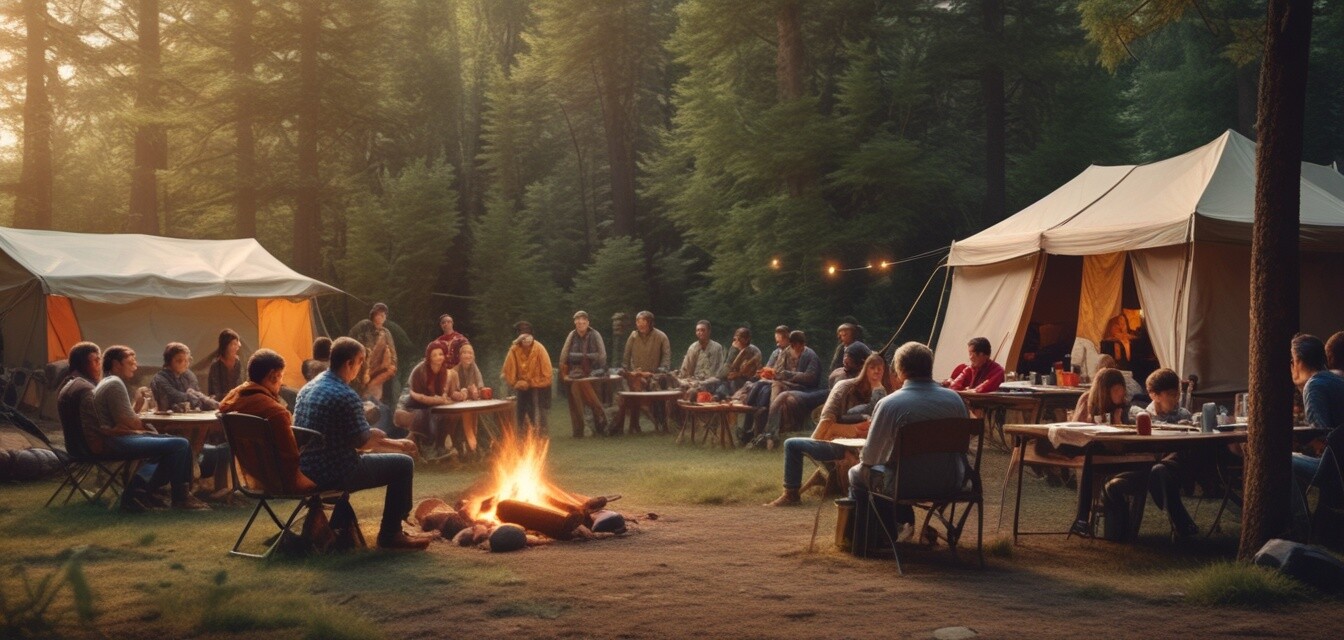
The Importance of Community in Emergency Prep
Key Takeaways
- Building a strong community enhances disaster preparedness.
- Collaboration fosters sharing of resources and knowledge.
- Community training can lead to better response during emergencies.
- Local networks provide emotional and practical support.
- Regular drills can strengthen community ties and readiness.
In an increasingly unpredictable world, emergency preparedness is crucial. However, one often-overlooked aspect of effective disaster readiness is the importance of community involvement. By fostering strong relationships within a community, individuals can create a network of support that not only enhances emergency preparedness but also strengthens community bonds. This article explores how building community support can enhance disaster preparedness in outdoor settings.
The role of community in emergency preparedness
Communities play a pivotal role in emergency preparedness. When individuals come together, they can share knowledge, skills, and resources that improve overall disaster response. Here are some ways community engagement enhances emergency preparedness:
- Resource Sharing: Communities can pool resources like food supplies, first aid kits, and emergency gear to ensure everyone is equipped.
- Training Programs: Conducting regular training on first aid and disaster response helps residents feel confident and prepared.
- Emotional Support: Having a support network can reduce anxiety and fear during emergencies.
Creating a community emergency kit
A community emergency kit is an essential tool for enhancing preparedness. It encourages collaboration and ensures everyone has access to crucial supplies. Here’s how to effectively create a community emergency kit:
| Item | Importance | Quantity |
|---|---|---|
| Non-perishable food | Provides sustenance during emergencies | Based on population size |
| Water | Essential for survival | One gallon per person per day |
| First aid kits | Addresses injuries and health issues | One for every 10-15 people |
| Flashlights | Provides light during power outages | One per household |
| Whistles | Signals for help | One per person |
Building community relationships
Strengthening local ties is critical for a cohesive emergency response. Here are several strategies for developing relationships within your community:
- Organize Meetings: Regular gatherings allow residents to discuss preparedness plans and share personal experiences.
- Community Events: Hosting barbeques or outdoor activities can foster camaraderie and trust.
- Collaborate with Local Organizations: Partnering with local groups can amplify outreach efforts and provide additional resources.
Training together for better preparedness
Regularly scheduled training sessions allow community members to practice skills effectively. This helps ensure that, in an emergency, everyone knows their role. Here’s a sample training plan:
| Training Session | Date | Location |
|---|---|---|
| Basic First Aid | March 15 | Local Community Center |
| Disaster Response Drill | April 20 | Local Park |
| Emergency Kit Building Workshop | May 10 | Community School |
Benefits of a prepared community
When a community is prepared for emergencies, the benefits extend beyond safety. Prepared communities can:
- Increase Resilience: A well-prepared community can recover more quickly after a disaster.
- Enhance Connectivity: Strengthened ties create lasting relationships and cooperation among residents.
- Ensure Equity: Ensuring everyone has access to information and resources helps address vulnerabilities.
Emotional and psychological impact
Engaging with a supportive community can significantly reduce anxiety and stress during emergencies. Residents who actively participate in community preparation are more likely to feel resilient and optimistic when facing potential disasters. Building emotional support structures can be integral to nurturing a sense of safety and belonging.
Pros
- Shared resources lead to enhanced preparedness.
- Stronger emotional support during crises.
- Improved collaboration and skill sharing.
- Increased overall resilience of the community.
Cons
- Potential for disagreements among community members.
- Requires time and commitment from volunteers.
- Need for ongoing coordination and communication.
Staying connected
Maintaining communication in a community is vital for successful emergency response. Here are some effective strategies for staying connected:
- Social Media Groups: Create dedicated online groups for sharing updates and information.
- Text Alert Systems: Implement notification systems for sharing emergency alerts and training sessions.
- Community Bulletin Boards: Keep residents informed with up-to-date information about preparedness events and shared resources.
Conclusion
Building a supportive community is an essential aspect of emergency preparedness. By fostering relationships, sharing resources, and training together, communities can enhance their readiness for disasters. Remember, effective preparedness goes beyond individual actions; it thrives in collaboration and connectivity. Explore more about first aid kits and emergency food supplies to ensure your community is equipped and ready for any situation.